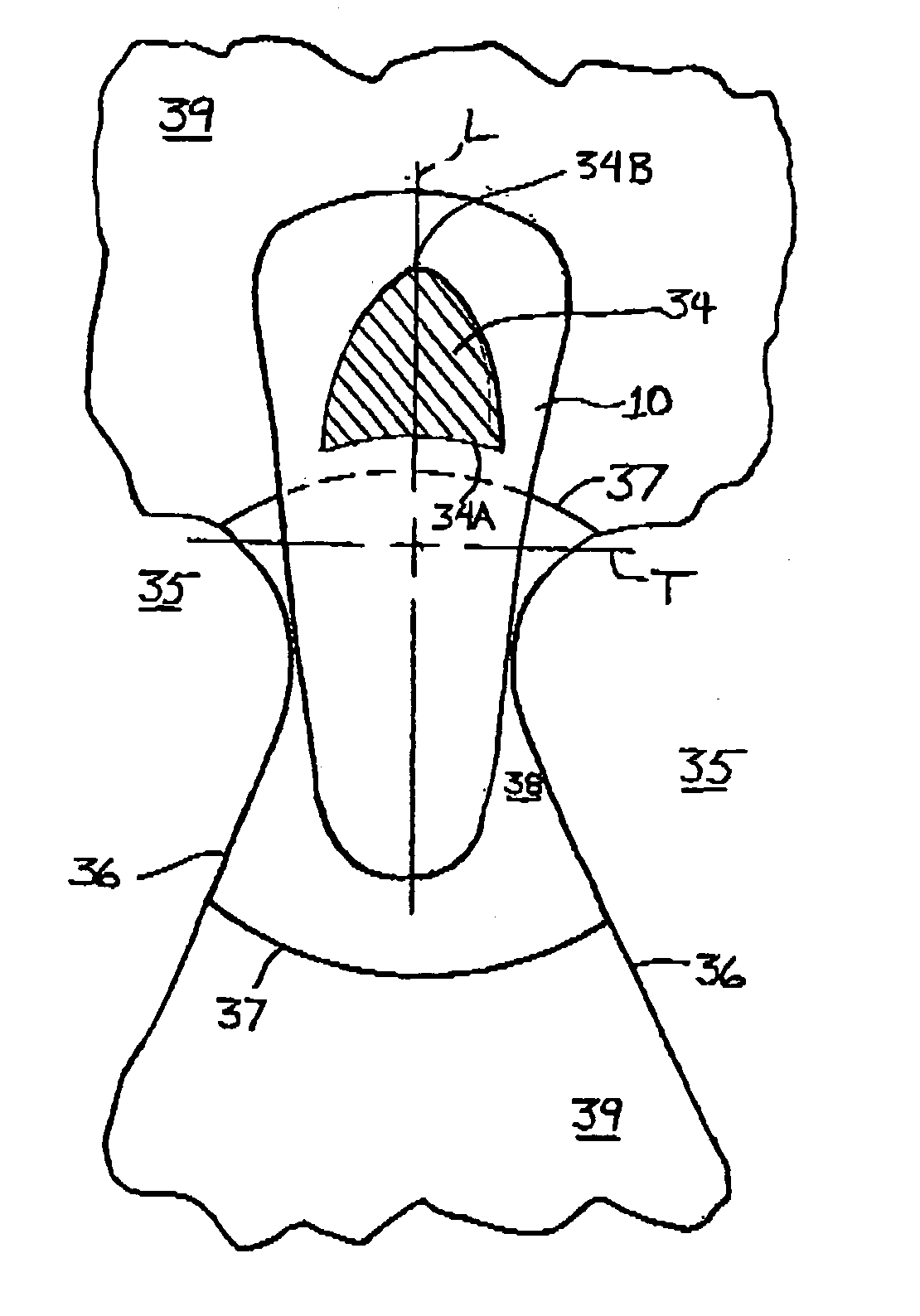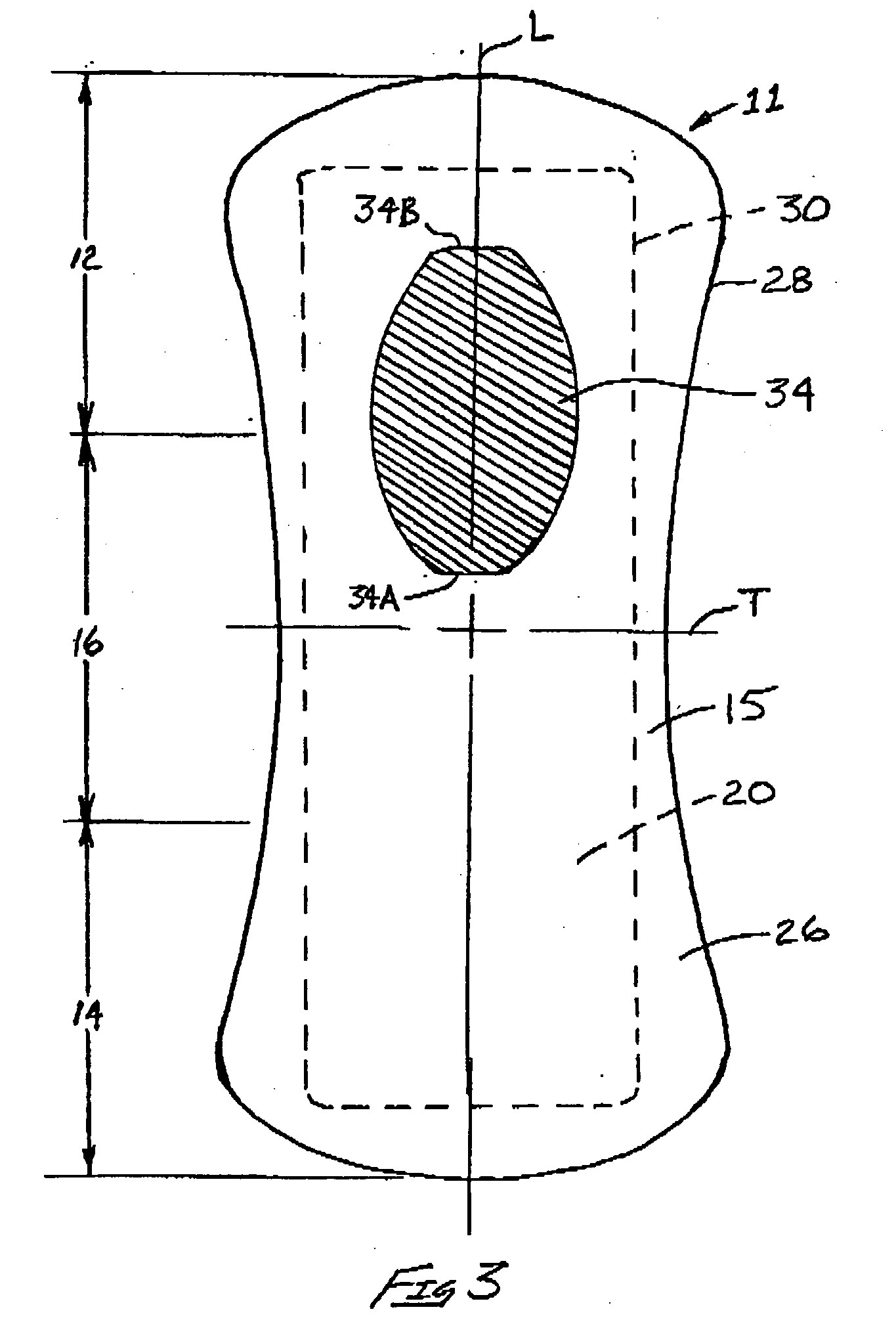Method of using an absorbent article having a functional enhancement indicator
a functional enhancement and absorbent article technology, applied in the field of disposable absorbent products, can solve the problems of body discharge coming into contact with wearers' garments or undergarments, menses, soiling of undergarments, etc., and providing an inherent indication of proper placemen
- Summary
- Abstract
- Description
- Claims
- Application Information
AI Technical Summary
Benefits of technology
Problems solved by technology
Method used
Image
Examples
Embodiment Construction
[0029] As used herein, the term “absorbent article” refers to devices that absorb and contain liquid, and more specifically, refers to devices that are placed against or in proximity to the body of the wearer to absorb and contain the various exudates discharged from the body.
[0030] As used herein, the term “feminine hygiene article” refers to disposable absorbent articles to be worn by women for menstrual and / or light incontinence control. Feminine hygiene articles are typically held in place adjacent the user's externally-visible genitalia (i.e., the pudendal region) by the user's undergarment. Feminine hygiene articles can be placed into the user's undergarment and affixed via adhesive or other joining means. Feminine hygiene articles do not include baby diapers.
[0031] One embodiment of a feminine hygiene article of the present invention, an incontinence pad 10, is shown in partially cut-away plan view in FIG. 1 and in cross section in FIG. 2. While the invention is disclosed i...
PUM
 Login to View More
Login to View More Abstract
Description
Claims
Application Information
 Login to View More
Login to View More - R&D
- Intellectual Property
- Life Sciences
- Materials
- Tech Scout
- Unparalleled Data Quality
- Higher Quality Content
- 60% Fewer Hallucinations
Browse by: Latest US Patents, China's latest patents, Technical Efficacy Thesaurus, Application Domain, Technology Topic, Popular Technical Reports.
© 2025 PatSnap. All rights reserved.Legal|Privacy policy|Modern Slavery Act Transparency Statement|Sitemap|About US| Contact US: help@patsnap.com



